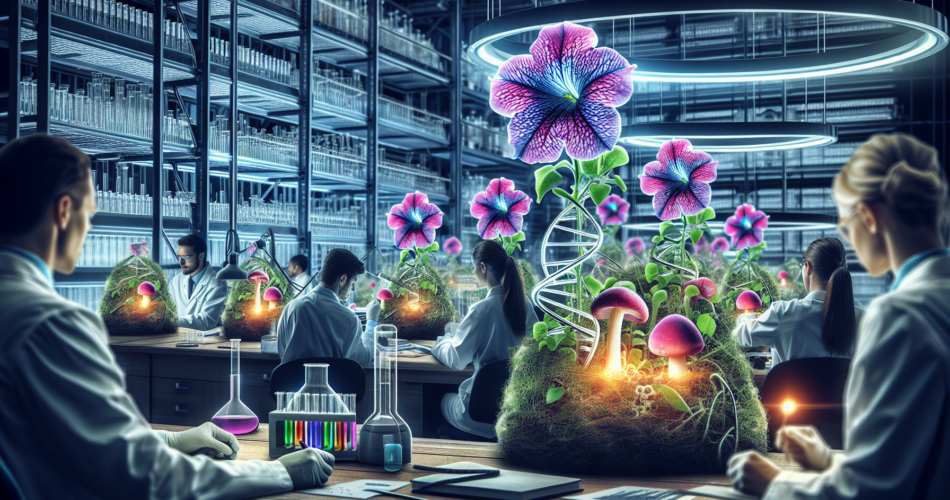In a remarkable intersection of biology and artistry, scientists have successfully inserted genes from bioluminescent mushrooms into common petunias, resulting in flowers that glow in the dark. This innovative genetic modification not only showcases the potential of biotechnology to enhance natural beauty but also invites discussion on the broader implications of bioluminescence in plants. As researchers continue to explore these developments, the fusion of nature and science opens new avenues for both ecological insights and artistic expression.
Genetic Innovation: How Mushroom Genes Brighten Petunias
The recent breakthroughs in genetic engineering have allowed biologists to introduce bioluminescent genes from mushrooms into the DNA of petunias. This process primarily involves the manipulation of specific genes responsible for the production of luciferase, the enzyme that facilitates bioluminescence. By carefully selecting and integrating these genes into the petunia’s genome, researchers have created flowers that emit a soft, ethereal glow, transforming the way we perceive and interact with plant life.
This genetic innovation has not only produced visually stunning results but also prompts a reevaluation of the capabilities of plant genetics. The glowing petunias represent a significant advancement in our understanding of plant biology, as they illustrate the potential for cross-species gene transfer to produce desirable traits. As genetic tools become more refined, the possibility of creating various bioluminescent plants could lead to a revolution in horticulture, enabling the development of novel varieties that captivate consumers and scientists alike.
Moreover, this endeavor reflects a growing trend in synthetic biology, where organisms are engineered to exhibit specific traits that serve both aesthetic and functional purposes. The successful insertion of mushroom genes into petunias is a testament to the power of modern biotechnology and its capacity to blur the lines between natural organisms and genetically modified creations. As scientists continue to experiment with these genetic techniques, the future of plant innovation appears increasingly vibrant and expansive.
Implications of Bioluminescent Plants on Ecology and Art
The introduction of bioluminescent plants, such as the glowing petunias, raises significant questions regarding their ecological impact. Bioluminescence can alter interactions within ecosystems, potentially attracting or repelling certain pollinators and herbivores. The effects of these genetically modified plants on local flora and fauna must be studied to ensure that they do not disrupt established ecological balances. Additionally, researchers may explore how bioluminescent plants could contribute to biodiversity conservation efforts by attracting endangered pollinators or serving as indicators of environmental health.
In the realm of art, bioluminescent plants offer exciting possibilities for creative expression. Artists and designers are increasingly incorporating living organisms into their works, blurring the boundaries between nature and human creativity. The glowing petunias can inspire new artistic installations, garden designs, and public art projects, where the interplay of light and nature captivates viewers. This melding of art and science can foster greater appreciation for biodiversity while stimulating discussions about our relationship with genetically modified organisms.
Furthermore, the aesthetic appeal of bioluminescent plants could catalyze a broader cultural shift towards the integration of biotechnology in everyday life. As society grapples with the implications of genetic engineering, glowing plants may serve as a bridge between skepticism and acceptance. By captivating the public’s imagination, these innovative plants can facilitate conversations about the potential benefits of biotechnological advancements, encouraging a more informed and nuanced understanding of their role in our world.
The advent of bioluminescent petunias, made possible through the insertion of mushroom genes, represents a significant milestone in the ongoing evolution of genetic innovation. This groundbreaking achievement not only illuminates the possibilities of plant genetics but also invites reflection on the multifaceted implications of such advancements. From ecological considerations to artistic inspirations, the glowing petunias exemplify how science can enhance our appreciation of nature while prompting essential conversations about the future of biotechnology. As researchers continue to explore the myriad applications of genetic engineering, the potential for brightening both our gardens and our understanding of the natural world is limited only by our imagination.

